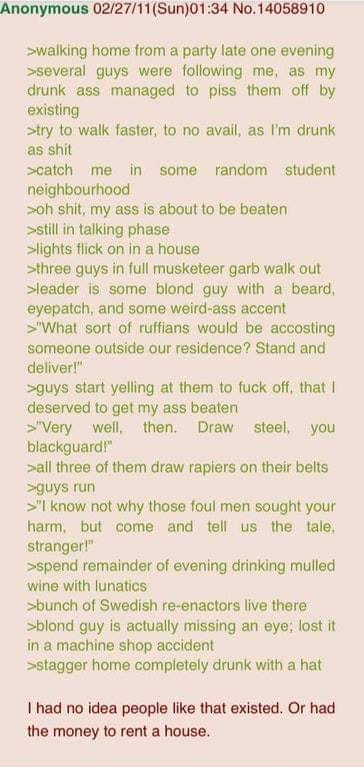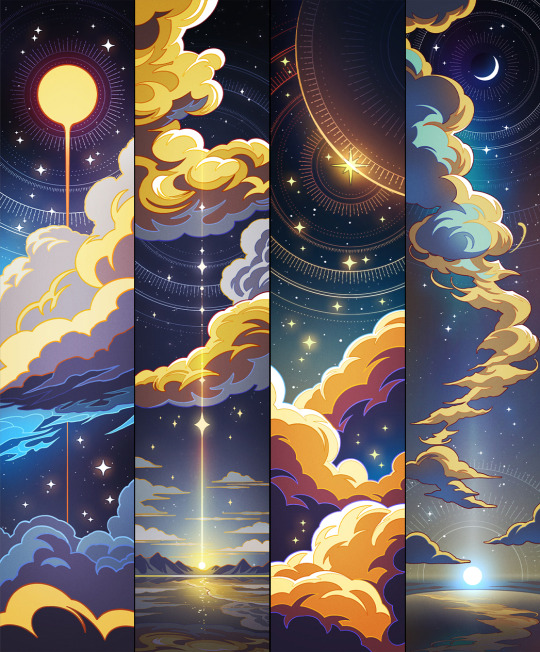Text

Penny and Maru
and with this i conclude this series of redesigns
8K notes
·
View notes
Text
Rowan doodles!!! +self insert



492 notes
·
View notes
Text



"Let us go together, my dear Consort eternal."
10K notes
·
View notes
Text
VERY IMPORTANT a dam in the Netherlands, the weerdsluis lock, is directly on a migratory path for spawning fish. They have a worker stationed there to open the door for the fish, but they can take a while to open it. So to keep the fish from getting preyed on by birds they installed a doorbell. Only, the fish don't have hands to ring the doorbell. If you go to their website, they have a LIVE CAMERA AND A DOORBELL that YOU RING FOR THE FISH when they're waiting, and then the dam worker opens the door for them! I can't express how obsessed I am with this. look at this shit. oh my god.

Please check on the fish doorbell once in a while :)
64K notes
·
View notes
Text
I think the absolute worst crime committed by the original LOTR movie trilogy was only putting the scene where Eomer finds Eowyn after the Battle of Pelennor Fields in the extended editions. Karl Urban at his absolute fucking best
7K notes
·
View notes
Text
regional differences
“oh hey,” she said, “it’s a really touristy area, but since you’re gonna be passing through anyway, you might as well stop by pier 29, see the dragons. also, there’s a—”
“hold on,” i said. “i knew your city had mountains, but. dragons? uh, actual living dragons?”
“dude, it’s not a big deal. they’re there all the time. of course they’re majestic and everything, but they’re loud and cranky and mostly they lie around eating garbage. now and then the city council will talk about trying to make them roost somewhere else, but—”
“dragons,” i repeated. i knew it was making me sound like a rube, but it was a lot to take in. “you live in a city that has dragons.”
“no, it’s cool, we used to go see them when i was a little kid. it’s worth doing. but that whole area is mostly dragon-themed gift shops, and the commercialization is kind of a bummer. also, sometimes a dragon will melt somebody’s car and it’s a whole problem.”
“fairytale-style, giant scaly fire-breathing dragons.”
“honestly, i forget other cities don’t have them?” she said. “there’s a few other sites on the west coast where they gather. portland calls them wyverns, but that’s a portland thing.”
“chicago’s got, like, bunnies and songbirds,” i told her, “but otherwise it’s just your typical vermin. pigeons, rats, sphinxes—”
“sphinxes? what the hell.”
“oh, yeah, they nest in the el tunnels. sometimes a fucking sphinx will flap down out of nowhere, bring the whole train to a halt until the front car answers a riddle.”
“that sounds exciting,” she said.
“it’s the worst. your train winds up being twenty minutes late, and you just have to hang out hoping somebody up there read their mythology. there’s supposed to be a program where the conductors get trained in riddling, but i don’t know. rahm emmanuel keeps saying it’s not a budget priority.”
“huh,” she said. “guess the grass is always greener and all that. but on some level, it’s nice to remember that even with all these big box stores, the country still has some variety left in it.”
“yeah, did you know that in rhode island they call water fountains ‘bubblers’?” i said.
“whoa, seriously?”
“i read it somewhere. crazy, right?”
“crazy.”
58K notes
·
View notes
Text
They should invent a new kind of body that doesn't do that
33K notes
·
View notes
Text
Sometimes I'll give my spouse a kiss and then gloat about how they fell for my prank
4K notes
·
View notes
Text
I'm kind of at a point where the "queer spaces" i feel safest in are the ones that have a pet cishet dude or two hanging around
82K notes
·
View notes
Text

DnD Sorcerer Sebastian
Stardew Valley
My Ko-Fi
4K notes
·
View notes
Text
1. The Revolution Is a Relationship
[…] Something that worries me about social justice communities is that we tend to conceptualize “revolution” as a product, as a place and time that we expend all of our energy and anger to create – often without regard to the toll this takes on individuals and our relationships. [...] In our – often justified – anger and disappointment at the failure of ourselves and our communities to uphold the dream of revolution, we lash out. [...] What if revolution isn’t a product, some distant promised land, but the relationships that we have right now? What if revolution is, in addition to – not instead of – direct action and community organizing, the process of rupture and repair that happens when we fuck up and hold each other accountable and forgive?
2. The Oppressor Lives Within
[…] I’ve started to believe that I can’t engage in authentic activism, I can’t create positive change without recognizing and naming my own participation in the oppressive systems that I’m trying to undo. Coming from this position, I’m forced to have compassion for the people around me who I see also participating in oppression, even as I’m also angry at them. With compassion comes understanding, and with understanding comes belief in the possibility of change. When we become capable of holding that contradiction in our hearts – when we can be angry and compassionate at the same time, at ourselves as well as others – entirely new possibilities for healing and transformation emerge.
3. Accountability Starts in the Heart
[…] I often wonder how different things would look if it were more of a cultural norm to understand accountability as a practice that comes from within the individual, instead of a consequence that must be forced onto someone externally. What if we taught each other to honor the responsibility that comes with holding ourselves accountable, rather than seeing self-accountability as a shameful admission of guilt? What if we could have real conversations with each other about harm, in good faith? In a culture of indispensability, I cannot ignore someone when they tell me I have harmed them – they are precious to me, and I have to try to understand and respond accordingly. […]
4. Perpetrator/Survivor is a False Dichotomy
There is an intense moral dynamic in social justice culture that tends to separate people into binaries of “right” and “wrong.” […] “Perpetrators” are considered evil and unforgivable, while “survivors” are good and pure, yet denied agency to define themselves. Among the many problems of this dynamic is the fact that it obscures the complex reality that many people are both survivors and perpetrators of violence (though violence, of course, exists within a wide spectrum of behaviors). Within a culture of disposability – whether it be the criminal justice system of the state or community practices of exiling people – the perpetrator/survivor dichotomy is useful because it appears to make things easier. It helps us make decisions about who to punish and who to pity.
5. Punishment Isn’t Justice
[…] It isn’t inherently wrong to want someone who hurt you to feel the same pain – to want retribution, or even revenge. But as Schulman also writes, punishment is rarely, if ever, actually an instrument of justice – it is most often an expression of power over those with less. How often do we see the vastly wealthy or politically powerful punished for the enormous harms they do to marginalized communities? How often are marginalized individuals put in prison or killed for minor (or non-existent) offenses? As long as our conception of justice is based on the violent use of power, the powerful will remain unaccountable, while the powerless are scapegoated.
6. Nuance Isn’t an Excuse for Harm
[…] [I]ndispensability means that everyone – especially those have experienced harm – are precious and require justice. In other words, we cannot allow the fact that something is complicated or scary prevent us from trying to stop it. Trapped in the perpetrator/survivor dichotomy of understanding harm, it might seem like we have only two options: to ignore harm or to punish perpetrators. But in fact, there are often other strategies available. They involve taking anyone’s – everyone’s – expressions of pain seriously enough to ask hard questions and have tough conversations. They involve dedicating time and resources to ensuring that anyone who has been harmed has the support they need to heal.
7. Healing Is Both Rage and Forgiveness
If the revolution is a relationship, then the revolution must include room for both rage and forgiveness: We have to be able to tolerate the inevitability that we will be angry at one another, will commit harm against one another. When we are harmed, we must be allowed the space to rage. We need to be able to express the depth of our hurt, our hatred of those who hurt us and those who allowed it to happen – especially when those people are the ones we love. It is up to the community to hold and contain this rage – to hear and validate and give it space, while also preventing it from creating further harm. […]
8. Community Is the Answer
[…] Perhaps the reason we tend to recreate disposability culture and trauma responses over and over is because we are all, secretly, that frightened runaway kid, constantly searching for a home, but not really believing we can find one. Maybe we don’t create communities of true interdependence – of indispensability, of forever-family – because we are terrified of what will happen if we try. But I believe, have to believe, that true community is possible for me and for all of us. The truth is, we can’t keep going on the way we have been. We need each other, need to find each other, in order to survive. And I have faith that we can.
394 notes
·
View notes


